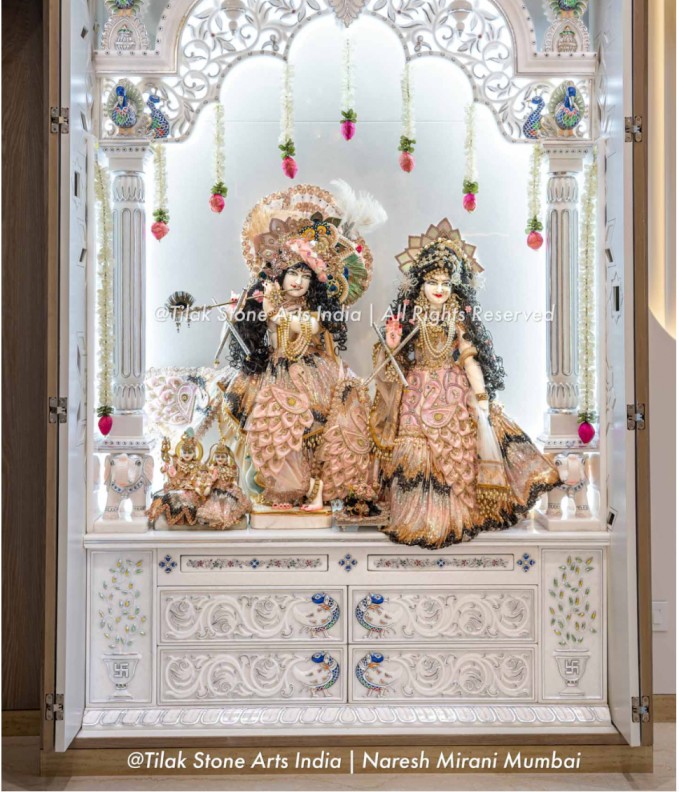There exists something profoundly moving about spaces carved from stone, particularly when those spaces hold the prayers of generations. A handcrafted marble pooja room transcends its physical form, becoming a place for creating family memories, whispered devotions, and sacred moments that bind one generation to the next in ways words cannot capture.
When families commission a marble temple manufacturer in Delhi or elsewhere, they begin a journey that extends far beyond material selection and design aesthetics. The process involves translating deeply personal spiritual beliefs into tangible form, creating a space where children will learn their first prayers, where grandparents will offer their morning rituals, and where countless family gatherings will anchor themselves in tradition.
The Language Stone Speaks Across Time
Stone as Memory Keeper: Perhaps no other material holds memory quite like marble does. The cool touch of Vietnam White Marble beneath fingertips becomes familiar across decades, a tactile connection that children carry into adulthood. When they return home years later, that same smooth surface grounds them in childhood memories, creating continuity in an ever-changing world. The grain patterns, the subtle veining, even minor imperfections become part of family lore, recognised and cherished like old friends.
Designing for Generational Continuity: Creating a pooja room that serves multiple generations requires thoughtful consideration of both tradition and evolution. The design must honour classical principles whilst accommodating changing family dynamics. Spaces need flexibility to grow with the family, allowing new rituals to find their place alongside established ones. Vietnam marble’s durability ensures the physical structure remains intact, but the emotional architecture must be equally resilient.
The Weight of Inheritance: There’s a particular responsibility that comes with inheriting a handcrafted marble temple. Unlike modern furnishings that families replace periodically, a well-crafted pooja room becomes permanent, a fixed point in family history. This permanence creates a different relationship with the space, one built on stewardship rather than ownership. Each generation becomes a temporary guardian of something larger than themselves.
The Artisan’s Dialogue with Devotion
Hands That Shape Sacred Spaces: The craftsmen who carve marble temples bring more than technical skill to their work. Years of training allow them to understand how stone responds to different tools, how light will play across carved surfaces, and which details will resonate most deeply with families. Their expertise, honed through material visits and aesthetic study, translates spiritual concepts into physical form. Each chisel mark carries intention, each curve reflects understanding of both art and devotion.
Traditional Techniques Meeting Contemporary Needs: Modern families face unique challenges in sacred space design. Living areas are smaller, lifestyles more mobile, yet the need for spiritual grounding perhaps grows stronger. Artisans trained in traditional methods now adapt centuries-old techniques to contemporary contexts. They might incorporate subtle lighting solutions within classical carved pillars or design compact temples that maintain their presence despite reduced dimensions. This adaptation requires deep material knowledge and creative problem-solving.
The Collaborative Creation Process: Unlike mass-produced alternatives, handcrafted temples involve ongoing dialogue between artisans and families. Design consultations explore not just aesthetic preferences but family traditions, specific deities, regional variations in worship practices, and personal spiritual journeys. This collaborative approach ensures the final creation truly reflects the family’s unique spiritual identity rather than imposing generic solutions.
When Stone Becomes Story
Ritual Marks and Patina: Over years of use, marble temples develop their own character. Areas frequently touched during prayer gain a distinct polish, lamp soot creates subtle shadows in certain corners, and the accumulated layers of ritual worship become visible. These marks, far from diminishing the temple’s beauty, actually enhance its emotional value. They provide physical evidence of devotion, a visual timeline of family spiritual practice.
Festivals and Family Gatherings: Major festivals transform pooja rooms into focal points for extended family gatherings. Children watch elders perform elaborate rituals, absorbing traditions through observation and participation. The marble temple provides the backdrop for these formative experiences, its carved deities witnessing multiple generations coming together. Years later, adults recall specific festivals not just as events but as moments anchored to that particular space, that specific arrangement of carved stone and sacred imagery.
Teaching Through Presence: Perhaps the most significant role handcrafted marble temples play involves silent teaching. Children growing up with a beautifully crafted sacred space absorb lessons about craftsmanship, dedication, and the value of preserving beauty. They learn that some things deserve careful attention, that quality matters, and that spiritual life merits investment of both resources and thought.
Balancing Modern Life with Timeless Practice
Contemporary Homes, Classical Values: Today’s architectural styles often clash with traditional temple aesthetics, creating design challenges. Families want sacred spaces that honour tradition without appearing anachronistic in modern homes. Solutions involve careful material selection—Vietnam White Marble adapts well to various design contexts—and thoughtful proportions that respect both classical temple architecture and contemporary spatial sensibilities. The goal involves integration rather than isolation, allowing the pooja room to feel both special and naturally part of the home.
Technology and Tradition: Modern families incorporate technology into spiritual practice in ways previous generations never imagined. Virtual darshans, recorded bhajans, and digital puja calendars coexist with traditional ritual items. Well-designed marble temples accommodate these additions without compromising their essential character. Discreet power points, subtle lighting controls, and clever storage solutions hide modern necessities whilst preserving the timeless aesthetic that makes these spaces meaningful.
Creating Flexibility Within Structure: The most successful generational temple designs build in adaptability. Removable elements allow families to refresh displays for different festivals, adjustable shelving accommodates changing ritual needs, and thoughtful proportions ensure the space works whether two people pray together or twenty gather for special occasions. This flexibility, combined with the permanent beauty of carved marble, creates spaces that serve families across decades of change.
Conclusion
Handcrafted marble pooja rooms represent more than beautiful additions to homes. They become repositories of family memory, teachers of tradition, and anchors in rapidly changing times. The artisan expertise poured into their creation, combined with materials like the Vietnam White Marble chosen for both beauty and longevity, ensures these spaces serve not just current needs but future generations.
If you’re considering creating a sacred space that will carry your family’s spiritual legacy forward, explore designs that balance traditional craftsmanship with contemporary living requirements, ensuring the space you create today becomes tomorrow’s cherished inheritance.

